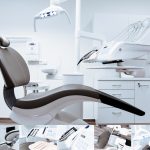
When it comes to straightening your teeth, the choices have vastly improved over the years. We’re no longer just stuck with the bulky metal braces that used to be the norm. Nowadays, there are advanced options like Invisalign that make the process more comfortable and aesthetically pleasing. But what exactly makes Invisalign a better choice than traditional braces? Let’s break it down.
1. Appearance and Aesthetics
One of the most noticeable differences between traditional braces and Invisalign is their appearance. Metal braces are quite visible, and for many people, especially adults, this can be a dealbreaker. On the other hand, Invisalign aligners are nearly invisible. Made from clear plastic, they blend seamlessly with your teeth, allowing you to maintain a more natural look. You can go about your day without feeling self-conscious about your smile.
2. Comfort and Convenience
Comfort is another significant advantage of Invisalign. Traditional braces come with metal wires and brackets that can irritate your gums and the insides of your cheeks. Invisalign aligners are smooth and custom-made to fit your teeth, minimizing irritation. Moreover, they’re removable, which means you can take them out when you’re eating or brushing your teeth. This kind of convenience makes daily routines much easier to manage.
3. Eating Without Restrictions
One of the major inconveniences of traditional braces is the dietary restrictions. Foods that are too hard, sticky, or chewy can damage the braces or get stuck in them. With Invisalign, you don’t have to worry about any of that. Since you can remove the aligners before you eat, you can enjoy all your favorite foods without any restrictions.
4. Better Oral Hygiene
Maintaining oral hygiene is simpler with Invisalign. Traditional braces can make brushing and flossing quite a challenge, often leading to plaque buildup or even cavities. With Invisalign, you can remove the aligners to brush and floss your teeth as you normally would. This ensures that your teeth and gums stay healthy throughout your treatment.
The Treatment Process
Traditional braces usually involve a lot of discomfort and multiple visits to the orthodontist for adjustments. Invisalign’s process is generally smoother. Your orthodontist will take 3D scans or impressions of your teeth to create custom aligners. You’ll receive multiple sets of aligners, each to be worn for about two weeks before moving on to the next set. This gradual transition makes the entire process less painful and more predictable.
-
Invisible aligners mean you can maintain your appearance.
-
It’s easier to eat and drink whatever you like.
-
Better oral hygiene because aligners are removable.
5. Less Dental Visits
Traditional braces often require frequent visits to the orthodontist for wire tightening and adjustments. With Invisalign, your visits are generally less frequent. After receiving your sets of aligners, you typically check in with your dentist every six to eight weeks. This can save you a considerable amount of time and hassle, making the treatment more convenient for people with busy schedules.
6. Predictable Treatment Timeline
In most cases, Invisalign offers a more predictable treatment timeline. The 3D imaging technology used in creating the aligners lets you see a virtual representation of how your teeth will move and what your smile will look like at the end of your treatment. Traditional braces, on the other hand, often involve more uncertainty. The constant adjustments mean the timeline can sometimes extend longer than initially planned.
7. Cost Considerations
One might think that such advanced technology would come with a higher price tag, but that’s not always the case. The cost of Invisalign is often comparable to that of traditional braces. Additionally, many dental insurance plans cover orthodontic treatments, making it easier to afford whichever option you choose. It’s always a good idea to discuss this with your dentist to find out what your specific options are.
8. Post-Treatment and Retention
After the braces come off, you’re usually required to wear a retainer to keep your teeth from shifting back. The same is true for Invisalign. However, the advantage here is consistency. Because the aligners are so easy to wear, you’re more likely to be disciplined about using your post-treatment retainer. This can make a significant difference in maintaining your new smile long-term.
Choosing the Right Option for You
Deciding between traditional braces and Invisalign is a personal choice and should be made in consultation with your orthodontist. Each option has its unique benefits, and understanding them can help you make a more informed decision. If you reside near a dentist in Las Vegas NV, don’t hesitate to schedule a consultation to discuss your specific needs and goals.
9. Case Complexity and Suitability
While Invisalign is an excellent solution for many people, it’s not always suitable for everyone. Complex orthodontic issues might still require traditional braces for effective treatment. Generally, Invisalign is ideal for mild to moderate dental misalignments. Your orthodontist will be the best person to evaluate your situation and recommend the most suitable treatment option.
-
Evaluate the appearance benefits of each option.
-
Consider the comfort and potential irritation factors.
-
Think about your lifestyle and how each choice will affect it.
-
Discuss the cost with your orthodontist to understand what fits your budget.
-
Evaluate the complexity of your dental issues.
10. Environment and Material Safety
When it comes to the materials used, traditional braces are made of metal, which can sometimes cause allergic reactions in sensitive individuals. Invisalign aligners are made of medical-grade polyurethane resin, which doesn’t contain BPA. This can make them a safer option for those who are concerned about plastic exposure. Plus, being removable, it gives you the freedom to wash and clean them properly.
11. Impact on Lifestyle
If you lead an active lifestyle, especially involving physical sports, traditional braces can pose a risk of injury. The metal brackets can cause cuts and bruises inside your mouth if you get hit. Invisalign aligners, being smooth and removable, eliminate this risk. You can take them out when necessary, significantly reducing the chances of oral injuries.
Final Thoughts
Both Invisalign and traditional braces have their own sets of advantages and are designed to help you achieve a beautiful, straight smile. While traditional braces may be better suited for more severe orthodontic issues, Invisalign offers a range of benefits, from aesthetic appeal and comfort to better oral hygiene and fewer restrictions on your lifestyle. Ultimately, the best choice will depend on your specific needs, the complexity of your dental issues, and your personal preferences. Consult your orthodontist to find the most suitable solution for you.























































